特斯拉外部环境分析ppt课件
- 格式:ppt
- 大小:975.50 KB
- 文档页数:8
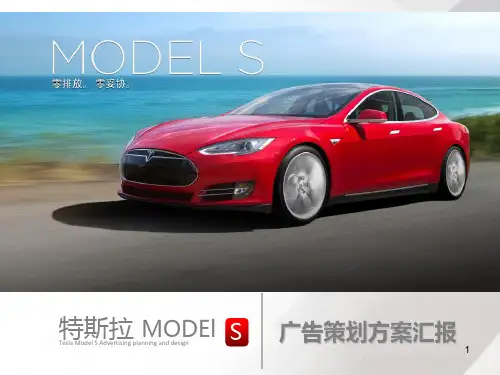
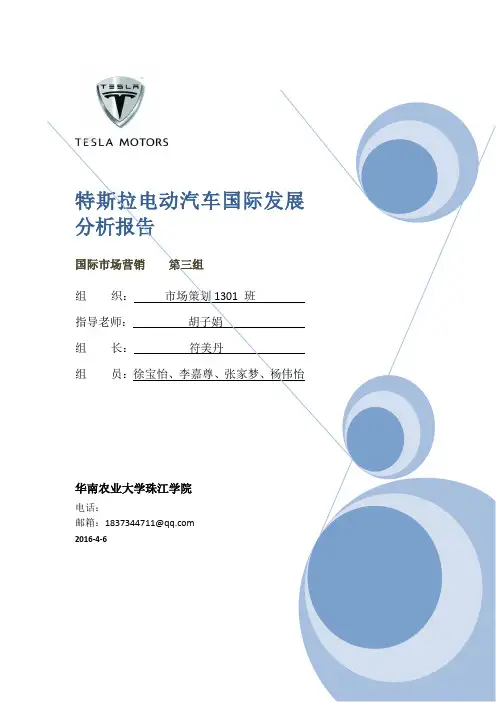
目录一、背景 ............................................................................ 错误!未定义书签。
(一)公司概况 ................................................................................................. 错误!未定义书签。
(二)公司产品 ................................................................................................. 错误!未定义书签。
二、发展 ............................................................................ 错误!未定义书签。
(一)SWOT分析 .............................................................................................. 错误!未定义书签。
(二)营销策略 ................................................................................................. 错误!未定义书签。
1.市场细分 ...................................................................................................... 错误!未定义书签。
2.目标市场选择 .............................................................................................. 错误!未定义书签。

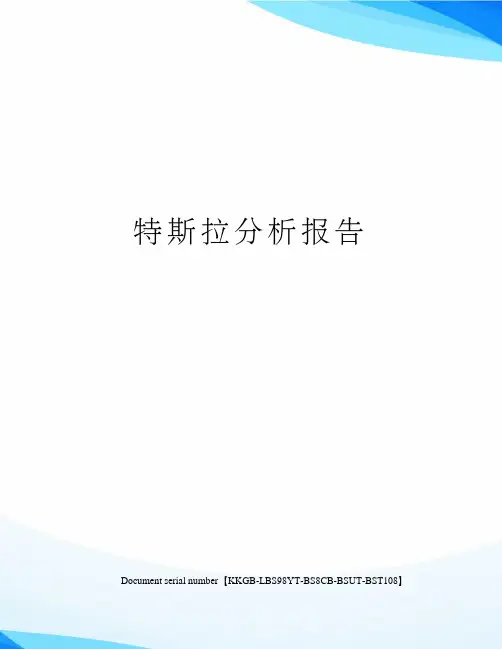
特斯拉分析报告Document serial number【KKGB-LBS98YT-BS8CB-BSUT-BST108】目录特斯拉电动汽车国际发展分析报告综合经营教育组织:市场策划1301 班指导老师:胡子娟组长:符美丹组员:徐宝怡、李嘉尊、张家梦、杨伟怡华南农业大学珠江学院乐享科技2016-4-6一、背景(一)公司概况2003年7月1日,马丁艾伯哈德与长期商业伙伴马克塔彭宁合伙成立特斯拉(TESLA)汽车公司,并将总部设在美国加州的硅谷地区2004年2月,埃隆马斯克向特斯拉投资630万美元,但条件是出任公司董事长、拥有所有事务的最终决定权,而马丁艾伯哈德作为特斯拉之父任公司的CEO。
不可忽视的是,特斯拉的背后,站着众多超级投资人。
其中包括谷歌创始人拉里佩奇、谢尔盖布林等人,还包括丰田、戴姆勒奔驰的子公司和松下等传统汽车巨头。
松下是特斯拉的锂电池电芯供应商,而特斯拉汽车的部分设计也受益于奔驰的启发特斯拉刷新了世界对电动汽车的认知,从这一点出发,特斯拉可以称得上是一个改变了世界的公司。
特斯拉当前的创新应该更多在商业模式以及对电动汽车的发展的推动上,是一个令人充满期待,并且值得让人敬佩的公司。
从诞生之日起,特斯拉的品牌一直都与“环保”、“高科技”等标签贴在一起,时时闪现出高冷的明星气质。
这的确在品牌初期为其吸引了众多支持者,并获得了意想不到的营销效果。
而借助这层光环加持,特斯拉开始了自己的故事。
在本土市场较为稳定之后特斯拉开始开拓中国市场。
(二)公司产品1.T esla Roadster2.T esla Model S3.T esla Model X4.TeslaModel S P85D二、发展(市场分析)(一)SWOT分析中国消费市场巨大,将成为特斯拉第二大消费市场特斯拉打通了整条产业链条燃料和维护成本的节省技术先进(碰撞)安全性好美国政府补贴在华享有本土政策补贴在华销售服务和充电站建设不断发展在纯电动汽车领域处于领先地位现阶段长途充电问题有待解决中国消费者对特斯拉充电认知存在局限产能有限,普及范围有待加强售价高,消费群体窄,产品过于单一在华市场规划能力有限中国政策限制其更深远发展缺乏强有力的战略伙伴直销模式导致合作伙伴减少随新能源发展,内部需求量不断扩大。
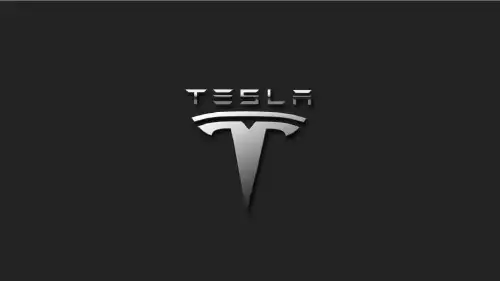
Case Study: Tesla MotorsContinue Creating Self-driving cars or not?Sayidana Brannan-Douglas | Hamza Mahmood | Bowen ZhengHigh Level Overview of the ProblemMain Sources of concern, % of respondents* * Based on responses by car buyers in China, Germany, Japan and S. Korea (n = 3500)●Increased humans trust and relianceon new systems.●Adaptive cruise control often fails tostop in the case of stationary objects.● 3 out of 6 fatal accidents linked toautopilot feature were associated withTesla’s car.●Tesla’s in-house technology is not thesafest compared to its competitorsSub-Problems of Problems To Address●Safety●Socio-Ethical●FinancialSafetyChallengesLack of LiDAR systemFlaw in Sensor LayoutSub-optimal Performance of Car ComputerLack of Sensor: LiDAR●Light Detection and Ranging (LiDAR)scanning is the state-of-the-art insurveying technology.●More advanced than the sonar andradar.●Instead of using sound or radio wavesto scan its environment, LiDAR utilizes laser light pulses.Lack of Sensor: LiDAR●Competing companies are usingLiDAR, even LiDAR matrix for moreaccurate mapping and ranging. Except Tesla…●Major Disadvantages:○Super expensive ($75k per unit)○Redesign and re-write theprogram of Autopilot software.Blind zones Increase the potentialpossibility of crash due to not detect or detect too late.Flaw of sensors: LayoutShort of Car computer: under-performance●Currently using:○Nvidia Drive PX2 Platform○8000 Gflops○200 Watts●Only 1 front camera is workingnow.●PX2 does not have enoughcomputation power to handle allthe cameras and sensors.●More powerful chip is available.Kman Auto on YouTube https://youtu.be/Pm1S49THsH4Possible Solutions●Put LiDAR on Tesla●Change the layout●Find a better Car ComputerJudging criterias●Cost : cost increase per car●Time of completion : month(s)●Effectiveness : “little to none”, “good”, and “perfect”.●No design change. Supply chain change cost will be even out with the lower priceper chipset.●Similar architecture, similar hardware.●Make more sensors active, but they are still just sonar and camera.Decision Analysis LiDAR Rearrange sensors Better ECUCost (per car)Time ofdevelopment Effectiveness 75000+100036 months Perfect ●LiDAR is very expensive●Tesla does not have program experience with LiDAR before, estimate progressmight be slow●Given the other companies using LiDAR now, the result is pretty good.150024 months Little to none 024 monthsGood●Even-swap method. Target: $cost●Average per car per month cost = $6277.42●“little to none” = -$10000; “Good” = -$30000; “Perfect” = -$50000.Decision AnalysisLiDAR Better ECUCost (per car)251987.12120658.08●The car computer alternative is our team’s choice to furtherimprove the Autopilot safety.Socio-EthicalChallenges Self-driving cars are not 100% safe given there havebeen a total of 38 dangerous incidents so farTesting results are not made public knowledge. Thiscauses trust issues between people and the companyRobots and self-driving machines are going to drivepeople out of employment.Trolley Problem A Big Challenge for ethicists in thefield of robotics and AIHit 4 TeenagersHit a Nobel Prizewinner Decision??Socio-Ethical Goals●Prioritize Safety of human life●Establish trust of consumers by pushing for full transparency of essential data betweencompanies and potential car buyers.●Create new opportunities for blue-collar workers (specifically taxi/truck drivers)Solution 1: Introduce Safe Shutdown Mode●To address the trolley problem, we recommend adding a safe shutdownmode in the critical, life threatening situations.●No loss of life or damage involved●Hard problem!Such cases are unpredictable and hard to anticipate.Requires sophisticated Machine Learning algorithms.●Progress so far: Tesla’s Model 3Stoppage50 MPH28 MPH NowSolution 2: Share Knowledge with Community●Dealing with the transparency and trust problem. People who areinterested in purchasing cars are unaware about the black-boxsurrounding the self-driving car.●IIHS and New Car Assessment Program (NCAP) published Tesla’s reportof successfully passing the exam, earning 5 star rating for safety.●This builds the necessary trust to potentially buy the car.●Idea: Tesla can provide glimpse inside the ‘Autopilot’ feature to achieveacceptance. (Classified detail, so tricky business)Solution 3: Create Opportunities for Drivers●Drivers run the risk of unemployment due to technological advancement ●Automation is causing drivers to accept low wage jobs●Social reforms required to keep blue-collared workers in the workforce●Raise awareness and teach softskills to people so they can at least do clerical work3.5M Truck Drivers 340K Taxi Drivers 660K Bus DriversJobs Gained!Mckinsey’s latest report estimatesthat robots in the workplace couldcreate nearly double the jobs.The World Economic Forum generated a range ofestimates for job creation in the period up to 2022.“133 million new roles may emerge that aremore adapted to the new division of laborbetween humans, machines, and Algorithms.”SMARTER Method Using ROC Weights Rank of WeightRank Order CentroidWeightsPolicy Alternative 161.1Raise Awareness227.8Share results to public 311.1Safe ShutdownPolicy Goals Cost Associated ($/yr) Safe Shutdown Mode$15,000/carEstablishing Trust$800,000Create New Opportunities$2,500,000WeightsPrioritize Safety Establish Trust New Opportunities Raise Awareness 61.1324Share results to public 27.8451Safe Shutdown 11.1513Aggregate Score 100 4.11 2.72 3.06SMARTER MethodUsing ROC WeightsFinancialChallenges Lack of time against diligent competitors who are alsotrying to be the first to release autonomous carsBudget constraints for continuously investing in such anexpensive endeavor with extremely high estimates forthe cost of hardware and software car packageNegatively impacting the financial revenue of AmericancitiesChallenge 1: Lack of time against diligent competitors●Diligent competitors also trying to be the first to release autonomous cars many ofwhom do not also manage distributing standard cars on a regular basis.●Heavy money investment for tools and personnel required to remain at the top of thecompetition●Time constraints often means hiring additional people or paying existing personnel moremoney to solve the problem fasterChallenge 2: Budget Constraints●Continuously investing in such an expensive endeavor with extremely high estimates forthe cost of hardware and software car package●Tesla’s Market Cap is $41.7-66.1 Billion●Current estimates for a self-driving hardware and software car package: $70,000 to$150,000●Tesla’s Quarter 2 2018 earnings report revealed a loss of over $717.5 million but Quarter3 earnings released on October 24th reports a $311.5 million profitChallenge 3: Negatively impacting the financial revenue of American cities●For many American cities, 15-50% of their revenue comes from cars,○Gas taxes, vehicle registration fees, traffic tickets, and parking revenue●Driverless car’s software will ensure its is not parked in an illegal spot or has expiredregistration●It would be in Tesla’s interest to create driverless cars that will aid city residents whilealso not causing tremendous city revenue deficits.Criteria and goals used to judge the solutionsvery large financial investment -as a business profit has to be asignificant concern -weighed heaviest International high profile company with popular CEO -significantpart of appeal -weighed second heaviest Ensures that all the options are possible to implement -weighedthird heaviest 3. FEASIBILITY1. COST2. IMAGEProposed Solutions●Delay production until their revenue increases again○Trending in the Right direction: Quarter 3 earnings: $311.5 million profit○Postponing means necessary money for manufacture main cars, autonomous cars, and any unexpected occurrences.○Cost: positive; Image: neutral; Feasibility: positive●Seek additional financial investment○Current investors top 10 investors are entrepreneurs and investment companies invest billions○Cost: positive; Image: positive; Feasibility: neutral●Halt production completely○No longer in the race to becoming the first to release the self-driving car○Significantly decreases financial burden○Cost: neutral; Image: negative; Feasibility: neutralGoal Alternative MatrixEven SwapsDelay production until their revenue increases again Seek additional financial investmentsHalt production completely Cost Image FeasibilityScore +/+++//-/150162.5Swap ratio:Cost: “+” = 100“/” = 50 “-” = 0Image:“+” = 50“/” = 25“-” = 0Feasibility:“+” = 25“/” = 12.5“-” = 010025251005012.550012.5Recommendations●Seek a more efficient Car computer chipset●Prioritize safety with full transparency of essential data betweencompanies and potential car buyers●Seek additional financial investment a specific autonomous carfrom those at a similar status of their current investorsThank You Questions?。
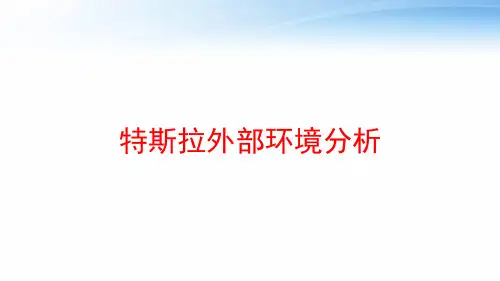

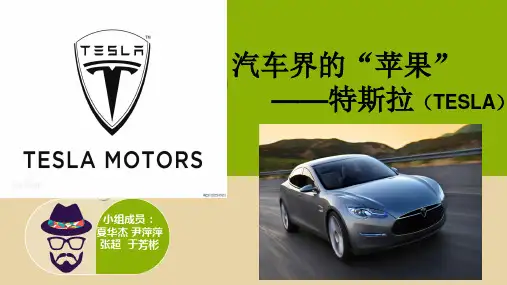
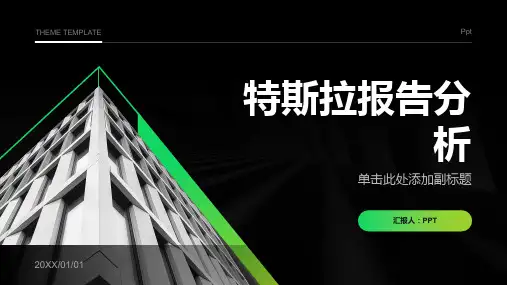
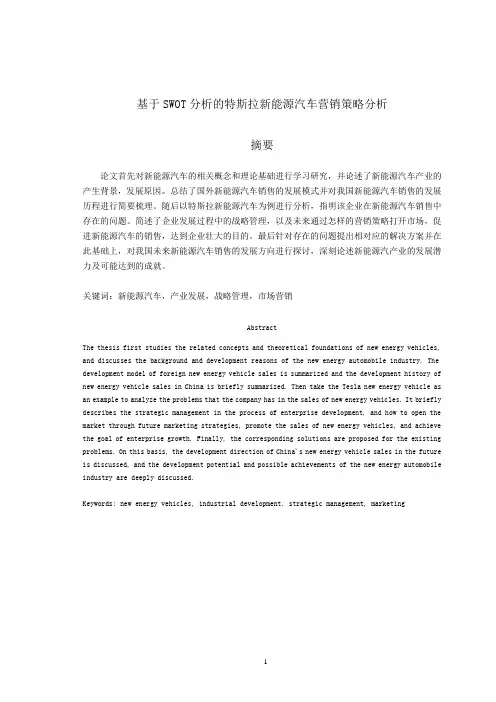
基于SWOT分析的特斯拉新能源汽车营销策略分析摘要论文首先对新能源汽车的相关概念和理论基础进行学习研究,并论述了新能源汽车产业的产生背景,发展原因。
总结了国外新能源汽车销售的发展模式并对我国新能源汽车销售的发展历程进行简要梳理。
随后以特斯拉新能源汽车为例进行分析,指明该企业在新能源汽车销售中存在的问题。
简述了企业发展过程中的战略管理,以及未来通过怎样的营销策略打开市场,促进新能源汽车的销售,达到企业壮大的目的。
最后针对存在的问题提出相对应的解决方案并在此基础上,对我国未来新能源汽车销售的发展方向进行探讨,深刻论述新能源汽产业的发展潜力及可能达到的成就。
关键词:新能源汽车,产业发展,战略管理,市场营销AbstractThe thesis first studies the related concepts and theoretical foundations of new energy vehicles, and discusses the background and development reasons of the new energy automobile industry. The development model of foreign new energy vehicle sales is summarized and the development history of new energy vehicle sales in China is briefly summarized. Then take the Tesla new energy vehicle as an example to analyze the problems that the company has in the sales of new energy vehicles. It briefly describes the strategic management in the process of enterprise development, and how to open the market through future marketing strategies, promote the sales of new energy vehicles, and achieve the goal of enterprise growth. Finally, the corresponding solutions are proposed for the existing problems. On this basis, the development direction of China's new energy vehicle sales in the future is discussed, and the development potential and possible achievements of the new energy automobile industry are deeply discussed.Keywords: new energy vehicles, industrial development, strategic management, marketing目录第1章引言 (4)1.1研究背景 (4)1.2研究方法 (4)第2章新能源汽车的相关概念 (4)2.1新能源汽车的定义 (4)2.2新能源汽车的类别和特点 (5)2.2.1混合动力电车 (5)2.2.2纯电动汽车 (5)2.2.3燃料电池电动汽车 (5)2.3新能源汽车发展趋势 (5)第3章新能源汽车销售的理论基础 (6)3.1战略管理理论 (6)3.1.1SWOT模型 (6)3.1.2PEST模型 (6)3.2市场营销理论 (6)3.2.1STP战略分析法 (6)3.2.24P营销组合分析法 (6)第4章新能源汽车的发展及销售现状 (7)4.1 汽车超市 (7)4.2 汽车交易市场 (7)4.3 品牌专卖模式 (7)第5章对特斯拉新能源汽车销售企业的现状分析 (8)5.1PEST分析 (8)5.1.1政治环境 (8)5.1.2经济环境 (8)5.1.3社会环境 (9)5.1.4技术环境 (10)5.2SWOT分析 (10)5.2.1优势分析 (10)5.2.1劣势分析 (10)5.2.1机会分析 (11)5.2.1威胁分析 (11)5.3新能源汽车销售中存在的问题 (11)5.3.1价格策略 (11)5.3.2渠道策略 (12)5.3.3促销策略 (12)5.3.4产品策略 (12)第6章新能源汽车销售问题的解决方案及未来发展方向 (12)6.1新能源汽车销售问题的解决方案 (12)6.1.1价格策略 (12)6.1.2渠道策略 (13)6.1.3促销策略 (13)6.1.4产品策略 (13)6.2新能源汽车销售的未来发展方向 (13)6.2.1产品定位 (13)6.2.2产品开发 (14)6.2.3进一步拓宽渠道 (14)6.2.4提升研发能力,加强基础设施建设 (14)参考文献 (15)第1章引言1.1研究背景石油资源的迅速消耗以及二氧化碳排放量的与日俱增,环境问题已经能源危机问题的日益凸显,由此各大汽车厂商对新能源汽车的研发投入大量资源,进而推动了节能环保的新能源汽车的发展。
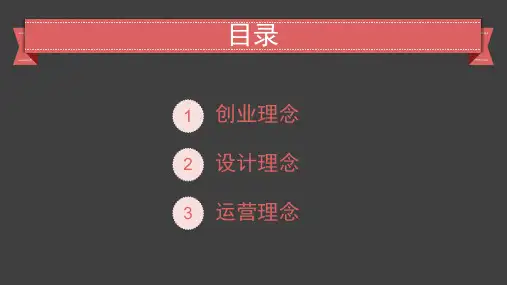
宁夏大学经济管理学院特斯拉公司的企业战略与IT战略电子商务1班2014/6/10目录一、特斯拉汽车公司战略分析 (5)1 、PEST分析 (5)1.1政治环境分析 (5)1.2 经济环境分析 (5)1.3社会环境分析 (5)1.4技术环境分析 (5)2、SWOT分析 (6)2.1优势 (6)2.2劣势 (6)2.3机会 (6)2.4威胁 (7)2.5对持矩阵 (7)3、五力分析模型 (8)3.1新进入者威胁 (8)3.2替代产品或服务威胁 (9)3.3客户议价能力 (9)3.4供应商议价能力 (9)3.5行业现有竞争状况 (10)二、特斯拉汽车战略选择及实施 (10)1、成长战略 (10)1.1现有产品现有市场(市场渗透) (10)1.2现有产品新市场(市场开发) (11)1.3现有市场新产品(产品开发) (11)2、一体化成长战略 (12)2.1后向一体化 (12)2.2前向一体化 (12)2.3水平一体化 (12)3、角化成长策略 (12)3.1同心多角化(原特长新市场新顾客) (12)3.2水平多角化 (13)3.3综合多角化 (13)4、竞争战略 (14)4.1成本领先战略 (14)4.2差异化战略 (14)4.3集中战略 (15)5、IT战略 (15)5.1 ERP (15)5.2电子商务平台 (16)三、特斯拉资源能力组织结分析 (16)1组织 (16)1.1组织结构 (16)1.2组织结构图分析 (17)1.3领导团队 (17)2能力 (18)2.1产品研发能力 (18)2.2生产能力 (18)2.3融资能力 (19)2.4 营销能力 (19)2.5危机公关能力 (19)2.6核心能力 (20)3资源 (21)3.1有形资源 (21)3.2无形资源 (22)四、总结 (23)一、特斯拉汽车公司战略分析1 、PEST分析1.1政治环境分析近年来,随着人类生存环境的不断恶化,国际社会共同意识到,汽车尾气的排放是导致这一结果的重要的因素,鉴于此,美国政府计划在2019之前投资75亿美元发展电动汽车,特斯拉汽车正是在这样的一种政治环境下成长起来的。